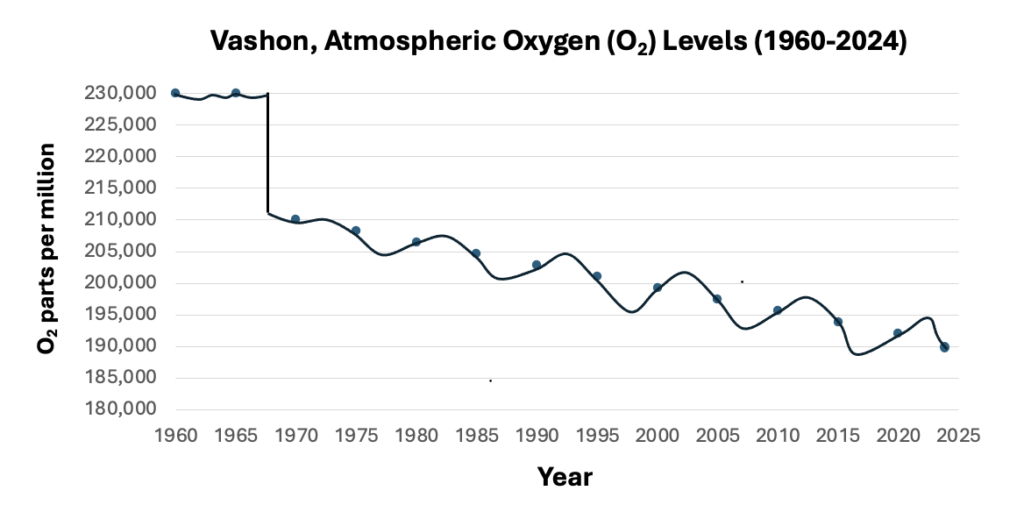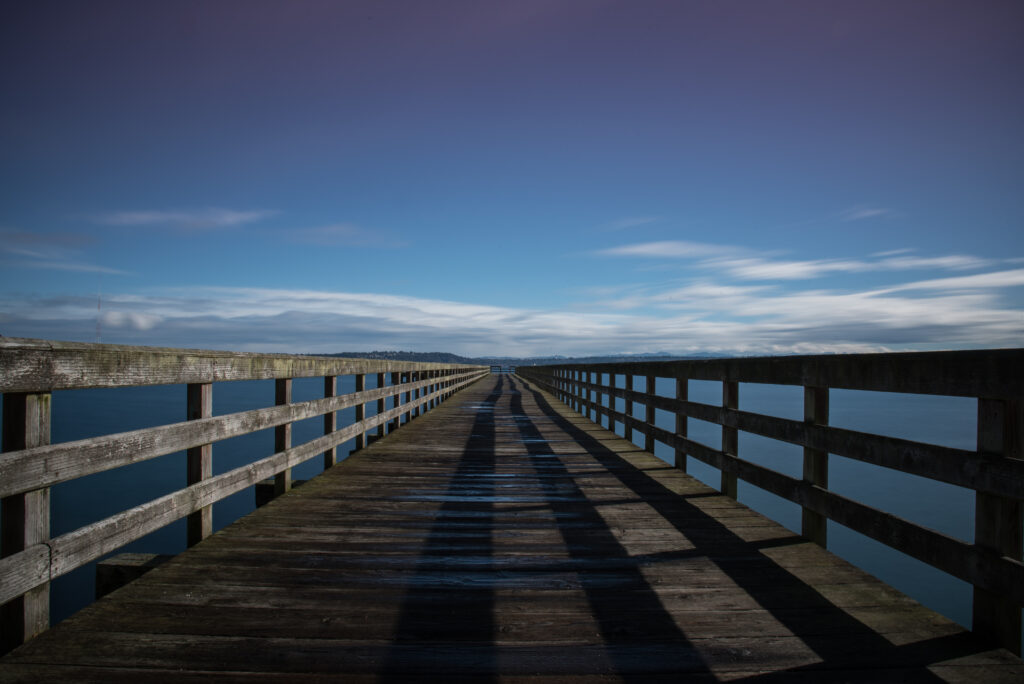By the Vashon Loop Editorial Board
Try as we may to deny it, there is a problem, and we know it. Vashon has an oxygen (O2) crisis, and our situation may actually signal an unrecognized issue for the entire region.
The world first took notice of greenhouse-gas-induced climate change in the 1970s. We were asked to be primarily concerned with increasing carbon dioxide (CO2) levels, but in the late 1960s, amateur Vashon investigators, equipped with homemade paramagnetic sensors, began to observe local O2 reductions.
This small, intrepid team, led by glassblowing expert and micro-mirror enthusiast Arnie Halvorson, had been convinced since childhood that declining O₂ – not excess CO₂ – posed the greater threat to humanity.
Sixty-five years ago, they built 100 ingenious grounded sensors, quietly placed in multiple Vashon sites as part of a homeschool science project. Because Vashon soil is uniquely high in electrical conductivity, our Island was the perfect choice for this technology. Since then, almost all the sensors have survived, continuously sucking in O2 and analyzing its atmospheric percentage, with Jason Halvorson, grandson of Arnie Halvorson, now managing the project.
Worldwide, O2 levels have remained stable for about 3 million years – at about 209,000 parts per million, or PPM. Interestingly, in 1960 when Halvorson and team started their research, they found that Vashon Island had somewhat higher-than-average O2 levels, at about 230,000 PPM.
The first drop in Vashon O2 was dramatic and happened in 1967 – widely remembered as the year the frogs did not croak until the Ides of March. Since then, the Island has lost a little O2 every year, with current Vashon O2 levels hovering at about 190,000.

These flip-flops in our O2 values are not without health impacts. Jason Halvorson recalls his grandfather describing Vashonites as being different in the 1960s: “He always said, ‘It was easier to breathe back then, even if you had to deal with more free radicals.’”
Now, with decreased O2 levels, health problems shift to respiratory issues and trouble with thinking and concentrating. According to Dr. Richard Leafleiter, a retired toxicologist and Vashon resident, the effect for some may be similar to high altitude, with symptoms like confusion, dizziness, and difficulty sleeping, His advice is to not drink, especially if you are already high.
Many have asked whether mold – which Vashon has so much of – might play a role in the O2 predicament. Dr. Leafleiter stressed the importance of understanding that this is not the case, because mold does not photosynthesize.
Until recently, Washington State had not paid enough attention to this problem. But that changed during the current Legislative Session. Public officials have recognized that this phenomenon might not be limited to Vashon – but it is not possible to know, because only Vashon is measuring its O2. This has led to calls for a modest King County property tax levy to evaluate the extent of the problem.
Several strategies have been proposed to alleviate the negative effects of the O2 crisis. A King County task force is being developed; current proposals include state-subsidized “O2 Bars” and mandatory house redesign to improve O2 ingress and egress. More radical is the “ALL TREES” movement (Action for Land Legacy: Tree Restoration, Expansion, Education, and Stewardship). This would involve Island-wide deindustrialization, combined with mass eminent domain property seizures, and is supported by 32% of Vashon residents.
What next? Perhaps Vashon can learn to live in productivity and harmony with our O2 problem. Or something. Either way, in the future, it’s likely that Arnie Halvorson and his team will finally be given the recognition they deserve.

